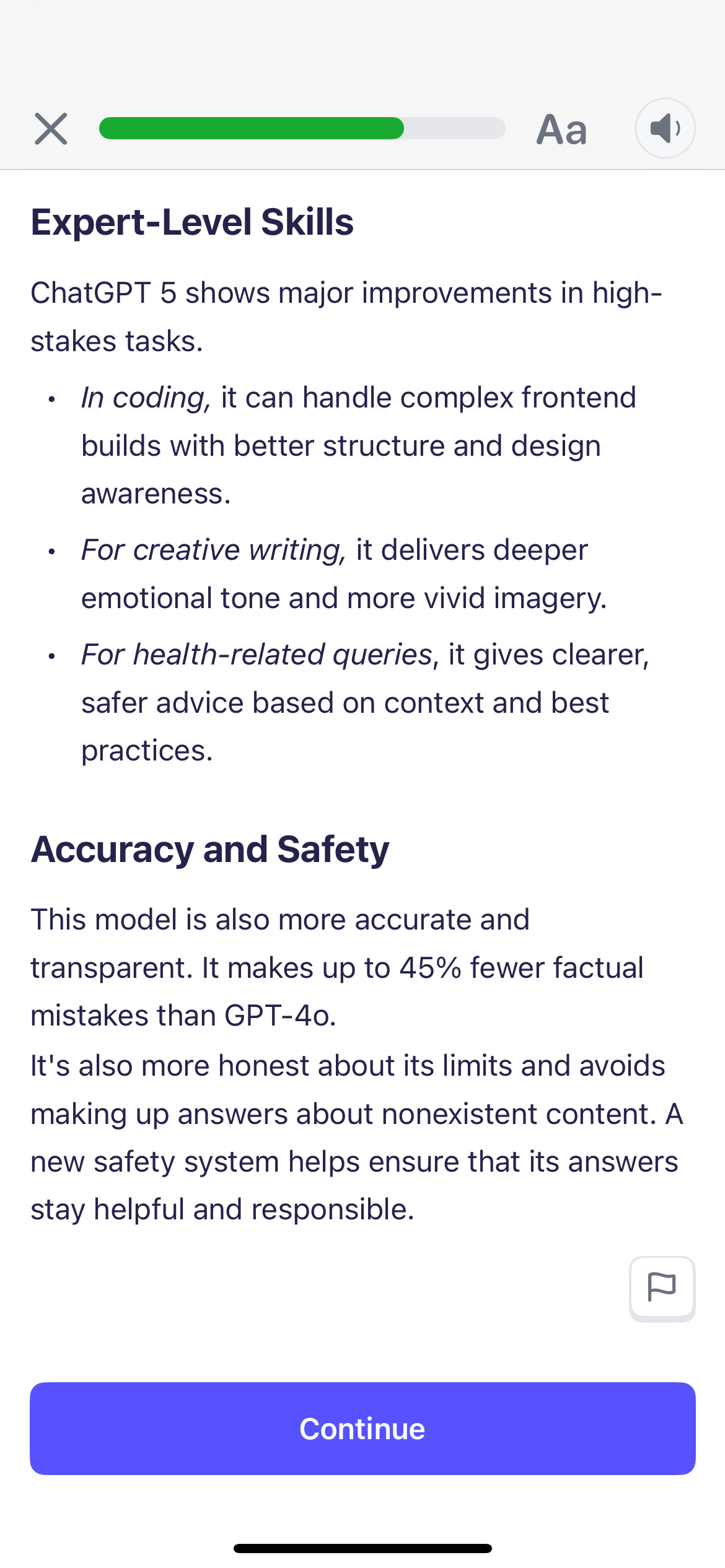ChatGPT Models Review: GPT-3, GPT-4, and ChatGPT 5
1/28
Earn XP
Description and Tags
Vocabulary-style flashcards covering key models (GPT-3 variants, GPT-4 variants, and ChatGPT 5) and concepts from the lecture notes.
Name | Mastery | Learn | Test | Matching | Spaced |
|---|
No study sessions yet.
29 Terms
GPT-3 series (01, 03-mini, 03-mini-high)
Older, fast and efficient models. 01 is for fast, simple tasks with low latency; 03-mini adds better reasoning while staying lightweight; 03-mini-high excels in STEM tasks like math, coding, and structured problem-solving. Used when quick responses and efficient automation are needed.
GPT-3 01
Fast, simple tasks with low latency.
GPT-3 03-mini
Improved reasoning while staying lightweight.
GPT-3 03-mini-high
Excellent for STEM tasks such as math, coding, and structured problem-solving.
GPT-4 series
More capable than GPT-3: stronger and smarter; handles complex tasks; precise for writing, research, and planning; generally slower than lighter models.
GPT-4
Precise and solid for writing, research, and planning; but slower relative to lighter GPT-3 variants.
GPT-4.5
Greater conversational depth and logic; ideal for long, structured projects.
GPT-40 Omni
Powerful model with lower latency; supports voice, files, and image input.
Why different models exist
ChatGPT runs on different models because tasks need different strengths (speed, deep reasoning, accuracy); a variety allows you to pick the right tool for the job and get better results faster.
Choosing the right model
Selecting the appropriate model can make prompts faster, clearer, and more effective.
ChatGPT 5 (beta)
Newest model, built for advanced use; runs tasks in parallel with agents; keeps long-term memory across sessions; integrates tools like Search, Deep Research, and Voice; supports multi-step workflows and dynamic collaboration.
ChatGPT 5 capabilities: memory and tools
Maintains long-term memory across sessions and integrates external tools (Search, Deep Research, Voice) to enable advanced workflows and collaboration.
